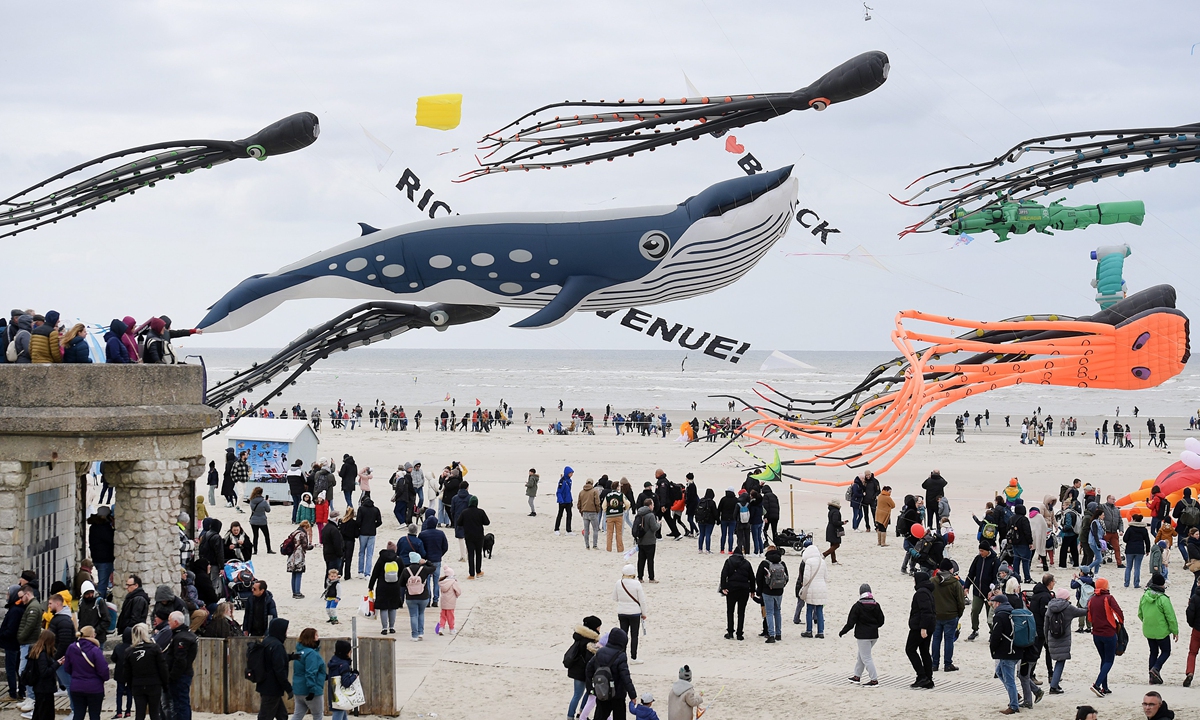
The 37th International Kite Meeting kicks off in France, transforming Berck-sur-Mer into a vibrant paradise with a week-long kite festival starting April 20, 2024. Photo: VCG
As spring breathes warmth into the air, kite festivals are being held worldwide, attracting thousands of kite enthusiasts and tourists alike. Flying kites, an ancient custom revitalized in modern society, is more than just an outdoor sport, but also a means of cultural preservation.
These festivals bring together top kite fliers from various nations, who showcase their unique designs and flying skills. The diversity ranges from China's traditional dragon kites to India's fighting kites, from simple paper versions to those made with modern high-tech materials.
Kites, invented by the ancient Chinese during the Spring and Autumn Period (770BC-476BC) over 2,000 years ago, has a rich heritage.
Legend has it that the philosopher Mozi crafted the first kite out of wood, a project that took three years to perfect. The inventor Lu Ban later improved on Mozi's designs using bamboo, and during the Eastern Han Dynasty (25-220), court official Cai Lun's improvements to papermaking technology led to the widespread use of paper in kite construction.
Right now, kite festivals not only highlight the diversity of the kites themselves, but also illustrate the cultural exchanges and integration they foster. In the context of globalization, these events serve as significant platforms for cultural dissemination.
On April 20, the 37th Berck-sur-Mer International Kite Festival in France opened, with China honored as the guest nation. This participation is a key part of the 2024 China-France Cultural Tourism Year.
China, the birthplace of kite flying, made its debut as the first guest country at the Berck Festival, bringing an authentic Chinese kite art and cultural experience to viewers.
The Berck Kite Festival, founded in 1987, is one of France's largest and most influential kite-themed events. The Paris Chinese Cultural Center, this year's organizer for the guest nation's activities, collaborated with Weifang city in East China's Shandong Province, known as the kite capital of China, to provide a wealth of kite resources and organize a variety of cultural experience activities, thus presenting Chinese culture from multiple perspectives.
The event featured dragon and lion dances, martial arts displays, tea ceremonies, calligraphy, traditional Chinese music performances, a
Hanfu (traditional Han clothing) show and experience, and kite-making workshops from the Weifang team, China News Service reported.
In 1958, a Chinese-French film titled The Kite premiered, using the kite as a medium to lay a solid foundation for diplomatic relations between China and France. The film tells the story of a Paris boy who receives a kite from Beijing with a letter, leading to a dream adventure in China and cross-continental kite-fueled correspondence.
In China, when people think of kites, they think of Weifang. The 41st Weifang International Kite Festival opened there on April 20, with kite enthusiasts from across the country bringing their carefully crafted kites to participate. The skies over Weifang were filled with kites of all shapes and creative designs.
This year's kite festival included the 20th World Kite Championship, which serves as an international venue for both economic and cultural exchanges and showcases rich traditional cultural elements. The championship commenced on April 20, featuring 137 teams from 46 different countries and regions and involving 465 participants who brought a total of 509 kites.
Khalil Hashmi, Ambassador of Pakistan to China, gave a speech at the opening ceremony held on April 19 in which he called the Weifang International Kite Festival a global event celebrating friendship, innovation, and the joy of flying kites.
Ali West Hill from India told the Global Times that he has been flying kites for 15 years but this was his first time in Weifang, as well as in China. He was very excited to see the country and experience the different culture here through the festival.
Meanwhile, traditional swallow and goldfish-shaped kites no longer suffice for many kite experts. This year, kites shaped like trains, rockets, and even the Hong Kong-Zhuhai-Macao Bridge took to the skies, with a giant cockroach kite becoming one of the most eye-catching ones.
One visitor remarked, "After coming here, I finally understand why there is a saying in Weifang that 'anything can reach the skies.'"
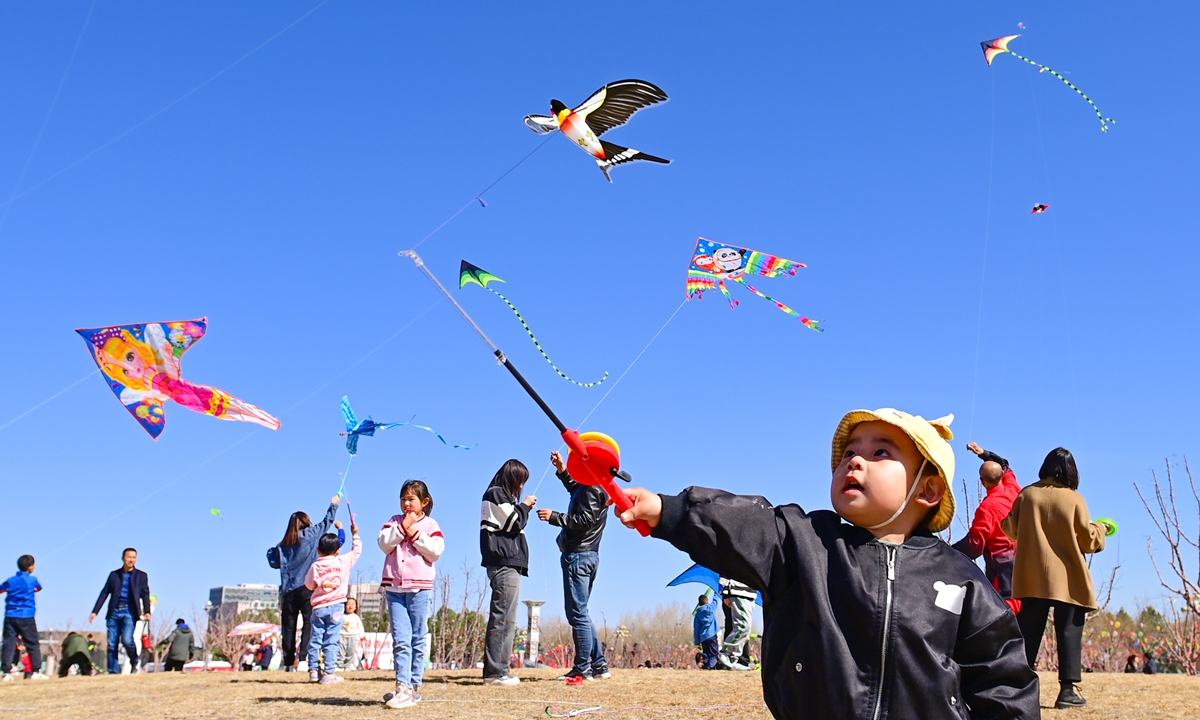
A child enjoys flying a kite during the Qingming Festival activities at the Asian Sculpture Art Theme Park in Kangbashi District, Ordos, North China's Inner Mongolia Autonomous Region, on March 30, 2024. Photo: IC
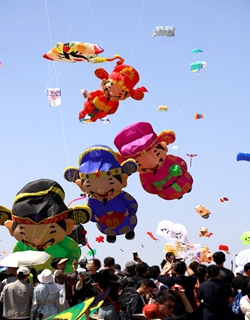
A giant kite themed after the Gods of Wealth is flown in Weifang, East China's Shandong Province, on April 20, 2024. Photo: VCG

A giant kite themed after the China-Europe Railway Express is flown at the 20th World Kite Championship in Weifang, East China's Shandong Province, on April 20, 2024. Photo: VCG
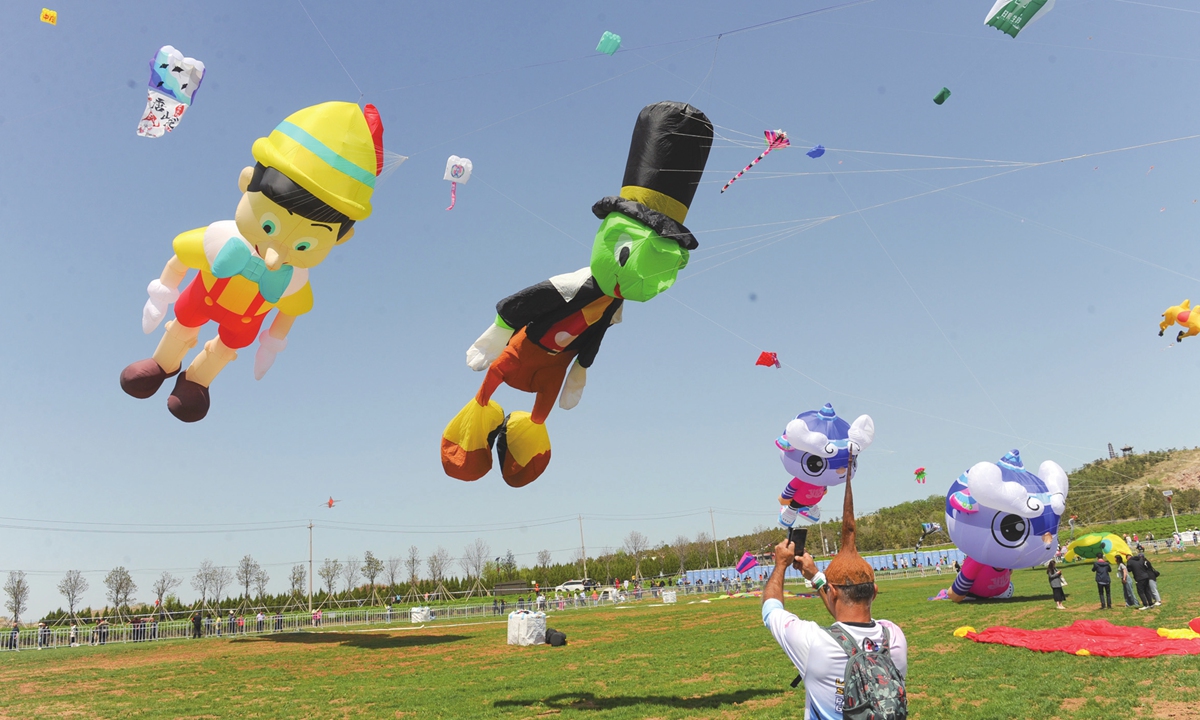
Participants fly kites of various styles at the opening of the 20th World Kite Championship in Weifang, East China's Shandong Province, on April 20, 2024. The event features 137 teams from 46 countries and regions, competing with 509 kites. Photo: IC
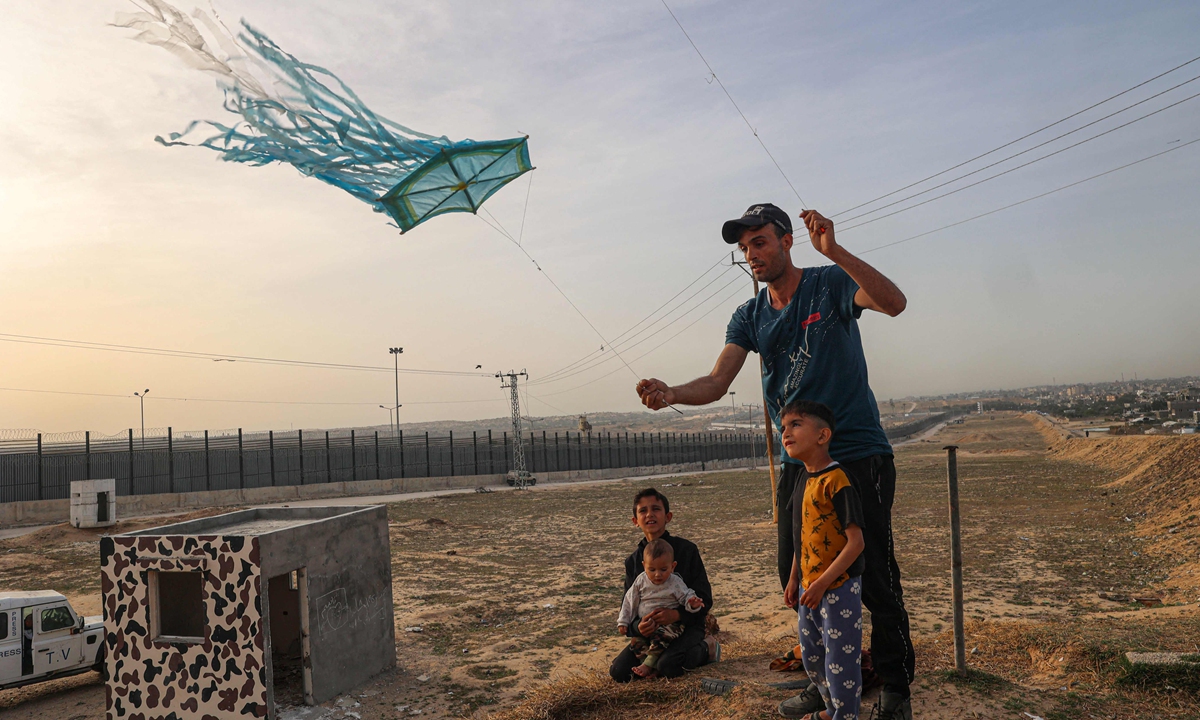
A displaced Palestinian man helps a child to fly a kite near the border with Egypt in Rafah in the southern Gaza Strip on March 28, 2024. Photo: VCG









